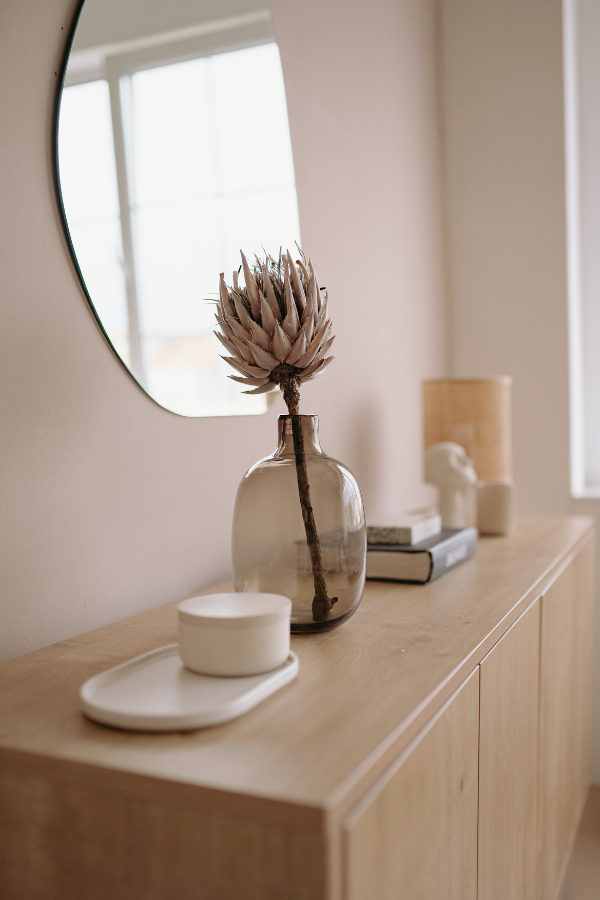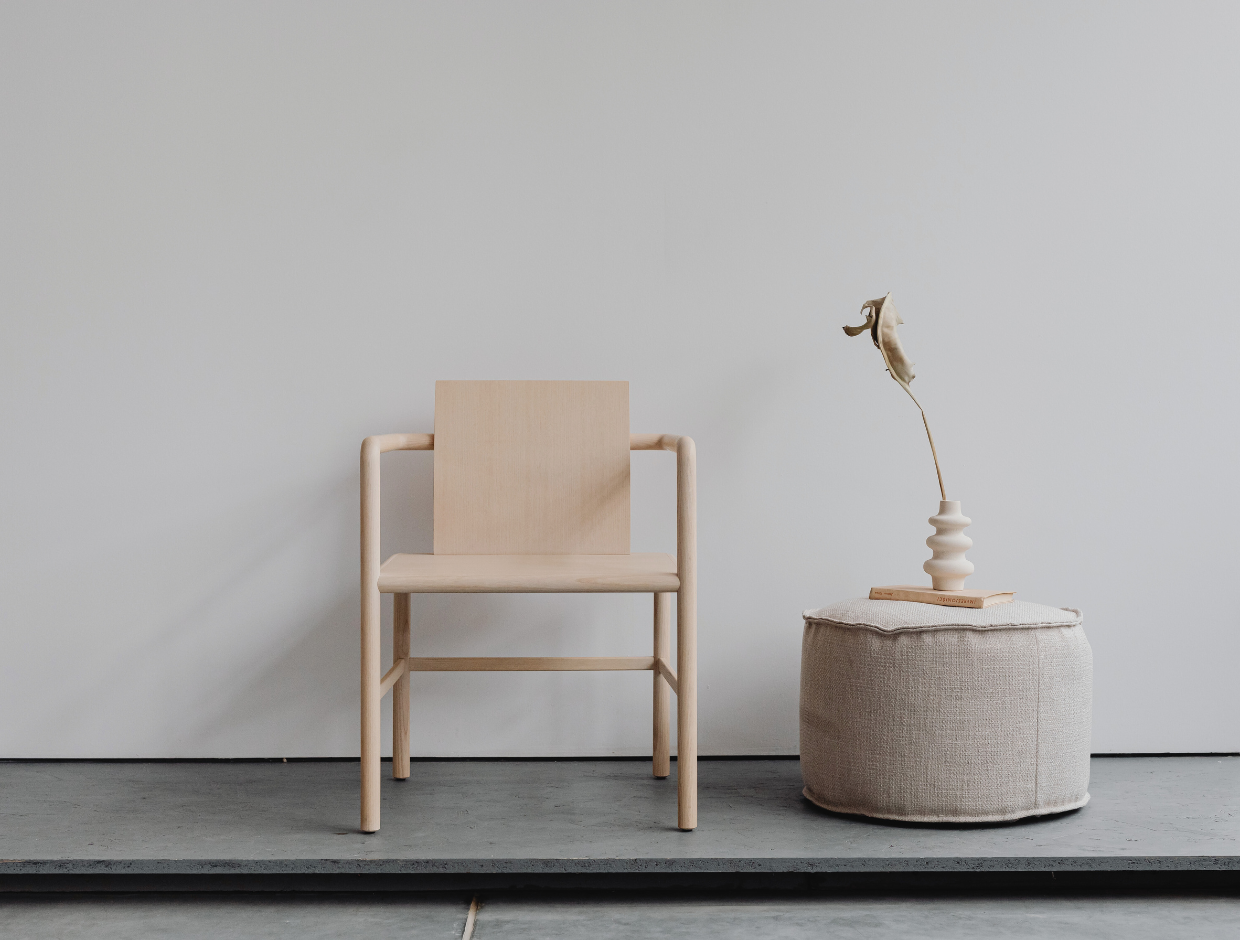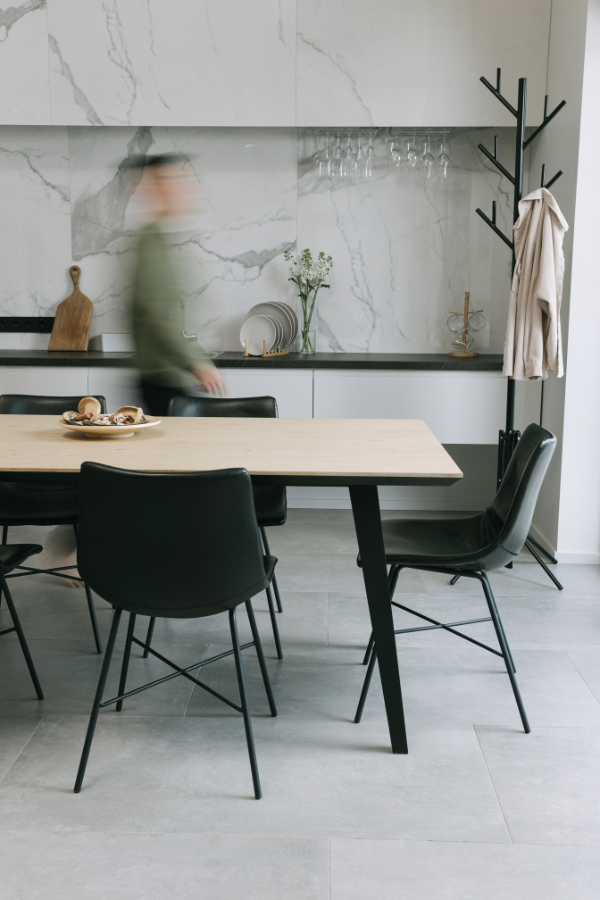

The Marriage of Tech & Taste: Exploring AI Interior Design
Summary
In this article, we discuss the integration of Artificial Intelligence (AI) into the field of interior design. We explore how AI interior design enhances the process through data analysis, mood and style recognition, virtual consultations, and AR visualizations. Despite the technological advancements, we emphasize the irreplaceable role of human creativity and intuition in interior design, urging a balanced approach to using AI as a tool rather than a replacement.
Reflection Questions
- How do you think the balance between technology and human creativity can be maintained in the field of interior design as AI tools become more prevalent?
- In what ways might AI impact the personal connection traditionally fostered between interior designers and their clients?
- What are the ethical considerations and potential consequences of relying heavily on AI for interior design decisions?
Journal Prompt
Reflect on your personal space at home or work. Considering the advancements in AI for interior design, how might you use such technologies to enhance your living or work environment? What changes would you implement, and what aspects would you insist on deciding without AI intervention?
It seems that everyone in our industry is currently fascinated by and fearful of AI interior design. At its core, interior design is the art of crafting spaces that are not only functional but also visually appealing. Historically, this discipline has been shaped by creativity, culture, and architectural traditions. From the grandeur of the Renaissance period to the minimalism of the mid-20th century, interior design has been a canvas for human expression.
For hundreds of years, the beauty and functionality of these spaces have relied heavily upon the expertise and intuition of designers. These professionals painstakingly selected colors, materials, and furnishings to achieve the desired aesthetic and functional outcome for interior spaces. However, the dawn of the digital age brought with it new possibilities and challenges for the world of interior design.
In the world of interior design, a fascinating transformation is underway — one that promises to redefine the way we conceive, create, and experience our living spaces. At the heart of this transformation is the marriage of technology and taste – with Artificial Intelligence (AI) playing a central role.
In this article, we explore how AI technology is revolutionizing the field of interior design – offering innovative solutions, enhancing user experiences, and shaping the future of our living environments.
AI as an Interior Design Tool


Artificial Intelligence in interior design refers to the use of algorithms, data analysis, and machine learning to enhance and streamline the design process. AI systems can analyze vast amounts of data – including design trends, user preferences, and even environmental factors – to generate insights that inform design decisions.
AI in interior design offers a plethora of capabilities and applications. From mood-based color selection to space optimization to trying different interior design styles in empty spaces to a full-fledged AI interior designer, AI-powered tools can significantly augment a designer’s toolbox.
They can recommend furniture layouts, create a floor plan, suggest décor elements, and even anticipate future design trends. Below are a few ways in which AI might influence the interior design process and our industry as a whole.
Data Analysis
AI systems excel at processing vast amounts of data. In interior design, this means they can analyze trends, user preferences, and even environmental data to inform design decisions. Designers can leverage AI to stay up-to-date with the latest color palettes, materials, and styles that are in vogue.
Space Planning
An AI room planner can optimize layouts by considering various factors such as dimensions, traffic flow, and the placement of furniture and fixtures. It can generate multiple detailed floor plans quickly—allowing users to explore various possibilities and choose the one that best suits the client’s needs.
Mood and Style Recognition


AI can also analyze images, color schemes, and design elements to identify the mood and style of a space. For instance, it can recognize if a room has a modern, minimalist, or traditional aesthetic based on visual cues. It can then recommend complementary design elements and offer other interior design ideas.
Virtual Design Consultations
AI-powered virtual design consultations have become increasingly popular. Clients can interact with AI-driven design assistants to discuss their needs and preferences – making the initial phase of interior design projects more efficient.
Augmented Reality (AR) Visualization
In some cases, an AI interior design app enables clients to see how a design concept will look in their actual space. AR apps released by furniture and home decor companies are a game changer for homeowners but are a source of stress for many designers. However, these interior design tools can be used by industry professionals to quickly edit a space or communicate easily with clients.
These apps allow clients and designers to virtually place furniture, decor items, finishings, etc. – allowing for better visualization and decision-making. Some AI tools and apps have a steep learning curve, but each app we tried had a relatively user-friendly interface.
Fuel your creative fire & be a part of a supportive community that values how you love to live.
subscribe to our newsletter
They can upload images and other files to faithfully reflect the size, shape, color, and materials of each element. After placing each item, you can assess your room design from different angles.
These AI-powered interior design apps are also used for virtual staging and virtual tours – which we will discuss later in this article.
Material Selection
AI can assist in selecting materials for interior design projects by considering factors like durability, maintenance requirements, and environmental impact. This ensures that designers make informed decisions about the materials they choose. These materials are guaranteed to not only meet design goals but also practical considerations.
The Designer’s Role


What is the role of the designer in this new era? As we explore the intersection of tech and taste, we become more convinced that the human touch remains an irreplaceable element in the world of interior design.
Traditionally, interior designers have been responsible for creating aesthetically pleasing and functional spaces for their clients. They work closely with clients to understand their needs, preferences, and lifestyles and then use their expertise to select furniture, colors, materials, and layouts that bring the client’s vision to life. It’s a highly creative and personalized process that relies on the designer’s intuition, experience, and sense of style.
With its machine learning algorithms and data-driven insights, AI can undoubtedly streamline processes, generate design recommendations, and even predict trends. Yet, it’s essential to understand that AI operates within a defined set of parameters and learns from historical data. While it can make highly informed suggestions, it doesn’t possess the intuitive, empathetic, and creative qualities inherent to human designers.
Below are a few ways in which the interior designer will continue to deliver incredible spaces to clients and shape our industry – all while using AI as a valuable tool.
Creativity and Personalization
One of the primary facets where the designer’s role remains pivotal is creativity. Interior design is – at its core – an art form. It’s about storytelling through spaces, curating emotions, and bringing unique visions to life. This aspect of design is deeply personal and is founded on an individual’s experiences, cultural influences, and artistic instincts.
Human designers excel in interpreting a client’s aspirations, values, and lifestyle to create spaces that resonate with their essence. AI may assist in this process by analyzing data and preferences or offering interior design inspiration, but it is the human designer who infuses the design with a soul – ensuring that it speaks to the client on a profound level.
Innovation and Adaptability


Design trends and technologies are continually evolving. The designer’s role extends to staying at the forefront of these changes. AI can aid in trend analysis and offer insights into emerging styles, but it’s the designer’s ability to synthesize this information, adapt it to the unique needs of each project, and push the boundaries of creativity that truly set them apart.
Innovative thinking, intuition, and adaptability are qualities that human designers possess in abundance. They can experiment with materials, styles, and concepts – often creating groundbreaking designs that AI alone would not have conceived.
How Will Designers Use AI to Enhance Their Offerings?
Many designers will fear the impact AI might have on our industry, but others will take advantage of this technology. By leveraging AI-driven tools, designers can swiftly generate personalized design recommendations – taking into account individual preferences, budgets, and lifestyle needs. These tools aid in space planning, material selection, and color coordination – ensuring that every aspect of the design aligns with the client’s vision.
Furthermore, the use of virtual and augmented reality enables clients to virtually walk through their designed spaces – fostering better communication and decision-making. As AI continues to evolve, interior designers are poised to create more efficient, imaginative, and client-centric designs – ultimately delivering superior value to their clients.
Below are a few ways in which designers can empower themselves and expand their practices with AI tools.
Collaboration with AI
Designers now need to become proficient in working alongside AI tools and software. They should view each AI tool as a valuable contributor rather than a threat to their profession.
Enhanced Creativity


With AI handling more of the technical aspects of design, designers have the freedom to focus on creativity and innovation. They can push the boundaries of design, experiment with unconventional ideas, and truly elevate the aesthetics of a space.
Client-Centric Approach
Designers must continue to prioritize their clients’ needs and desires. AI can provide insights, but the human touch in understanding and interpreting a client’s vision is irreplaceable.
Sustainability Advocates
In a world increasingly concerned with sustainability, designers have a crucial role in promoting eco-friendly design practices. They can use AI to identify sustainable materials and energy-efficient solutions.
Challenges and Ethical Considerations of Interior AI
While AI holds great promise, it’s not without its challenges. One of the main concerns is over-reliance on AI, which can stifle human creativity.
Each professional designer must strike a balance between leveraging AI as a tool and preserving their creative vision. Let’s delve deeper into some of the challenges and ethical concerns posed by the use of AI in our industry.
Loss of Human Touch


One primary concern with AI in interior design is the potential loss of human touch. While AI can provide data-driven recommendations and optimize design elements, it may struggle to capture the emotional and cultural nuances that human designers bring to their work. The personal connection and creativity that designers infuse into their projects can be challenging for AI to replicate.
Interior design has always been about the relationship between the designer and the client—a collaborative process that involves understanding the client’s emotions, tastes, and lifestyle. The fear is that as AI becomes more sophisticated, it may replace some of the core aspects of this human-centric process.
The warmth of a designer’s personal touch, their ability to intuitively understand a client’s needs, and their creative insights might be diminished in the face of AI algorithms.
This brings us to another concern: over-reliance on AI interior design tools.
Over-reliance on Technology
There’s no denying that AI tools have numerous advantages for interior designers. They can enhance productivity by automating repetitive tasks, such as generating floor plans or recommending color schemes.
AI algorithms can also process vast amounts of data, helping designers stay updated on the latest trends and market preferences. Moreover, AI-driven software can offer valuable insights and suggestions, which can serve as a source of inspiration and guidance.
There’s a risk of over-reliance on AI tools, where designers may become dependent on AI-generated suggestions and lose their creative independence. This could result in designs that lack uniqueness and personal flair, ultimately diminishing the diversity of design styles.
View AI as a valuable tool to streamline tasks and gather insights, but remember that it should complement, not replace your creative input.
Job Displacement
Of course, the evolution of AI in design and other industries has produced concerns about job displacement and elimination. AI technologies are now being utilized to streamline and enhance various aspects of design, from architectural planning to interior décor.
However, with this wave of innovation comes a set of concerns, primarily revolving around the potential displacement of human interior designers.
The most prominent concern is that AI might replace some tasks traditionally performed by human designers. For instance, automated design software can quickly produce layout options — potentially reducing the need for manual space planning.
Ownership of Designs


Who owns the AI-generated designs? Is it the designer, the AI creator, or the client? Determining ownership can be a complex ethical issue.
Artificial intelligence has revolutionized the field of interior design by streamlining the creative process and offering designers a vast array of design possibilities. AI algorithms can analyze a client’s preferences, gather inspiration from a wide range of sources, and generate design concepts tailored to individual needs and tastes. This level of automation and personalization has undoubtedly elevated the design experience, but it also raises essential questions about ownership and authorship.
From the perspective of the human interior designer, AI serves as a valuable tool to enhance creativity and efficiency. Designers harness AI’s capabilities to explore innovative ideas and provide clients with a broader spectrum of design options. However, some argue that since AI is merely a tool that executes the designer’s vision, the designer should retain ownership of the final design. This perspective suggests that AI is an extension of the designer’s skill set, akin to a paintbrush or drafting software.
Accountability and Liability
If an AI-generated design fails to meet a client’s expectations or causes harm, who is responsible? Establishing clear lines of accountability and liability is important.
When AI is involved in creating interior designs, responsibility can be distributed among multiple parties. The company or individuals who develop and provide the AI system bear a significant responsibility. They must ensure that the AI is well-trained, follows ethical guidelines, and is designed to minimize risks.
Who is responsible if an AI system makes a design decision that a user later regrets? What if AI inadvertently perpetuates biases in design trends? These questions underscore the need for thoughtful regulation and ethical guidelines in the field.
If there’s a human interior designer involved, they should oversee and guide the AI-generated designs. They have a responsibility to review and validate the designs to ensure they meet safety and quality standards.
Data Collection and Secure Storage
Many AI-driven interior design platforms collect extensive data about users, including their design preferences, personal information, and even their home layouts. Ethical concerns arise when users are not fully informed about the extent of data collection or when data is used for purposes beyond design recommendations.
The storage and protection of user data are critical. If not adequately safeguarded, this data can be vulnerable to breaches, potentially compromising users’ privacy and security. Designers and AI developers must prioritize robust data protection measures.
The Future of Interior Design with AI


Looking ahead, the future of interior design is poised to be even more intertwined with AI. Emerging trends include the use of virtual reality (VR) and augmented reality (AR) to visualize designs in real-time, as well as AI-driven sustainability assessments to promote eco-friendly design practices.
Virtual Reality (VR) and Augmented Reality (AR) Integration
VR and AR technologies are being increasingly integrated into the design process. Designers can create immersive, three-dimensional virtual environments that allow clients to experience their designs in a lifelike manner before implementation.
VR and AR enable the creation of virtual showrooms where users can explore and interact with furniture and decor items in a digital space. This trend enhances the online shopping experience and helps users visualize how products will look in their homes.
One of the standout features of VR and AR virtual showrooms is the level of interactivity they offer. Users can interact with furniture items by rotating them, zooming in for a closer look, and even customizing colors and materials. This level of engagement provides a deeper understanding of how these pieces would fit into their own living spaces.
Traditional online furniture shopping often comes with a degree of uncertainty. Will that couch fit perfectly in the living room? How will that coffee table look alongside the existing decor? Virtual showrooms eliminate these doubts. Users can place virtual furniture items in their actual living spaces through their device’s camera, providing a clear visual of how each piece would look in their home.
Generative Design and Co-Creation
AI-driven generative design algorithms are being used to create design options automatically. These algorithms consider various constraints and objectives to generate design solutions, allowing designers to explore a wider range of possibilities quickly.
The beauty of Generative Design lies in its ability to explore uncharted design territory. It can suggest layouts, furniture arrangements, and color schemes that human designers might not have considered. This innovative approach sparks creativity and offers fresh perspectives – often leading to designs that are both aesthetically pleasing and functional.
Designers are collaborating with AI systems to co-create designs. AI suggests ideas, and designers refine and customize them. This collaborative approach combines AI’s data-driven insights with human creativity.
AI excels at processing vast amounts of data and generating options, but it lacks a nuanced understanding of human emotions and preferences. This is where the human touch comes in. Designers can fine-tune AI-generated designs – infusing them with a unique human sensibility and tailoring them to the client’s specific needs and desires.
The result? A harmonious blend of AI-driven efficiency and human artistry – producing interior designs that are both cutting-edge and deeply personal.
Sustainable and Eco-Friendly Design
AI assists in the selection of sustainable and eco-friendly materials by analyzing their environmental impact. This trend aligns with the growing emphasis on environmentally conscious design practices.
AI is being used to optimize interior designs for energy efficiency. This includes recommendations for lighting, heating, and cooling systems that reduce energy consumption and environmental footprint. AI algorithms can analyze a vast array of materials – considering factors like carbon footprint, durability, and sourcing. Designers and homeowners can now make informed choices about the materials they use – ensuring they align with sustainable principles.
AI can optimize lighting, heating, and cooling systems based on real-time data, weather forecasts, and occupancy patterns. This leads to reduced energy consumption, lower utility bills, and a smaller carbon footprint.
Natural Language Processing (NLP) and Voice Assistants
Traditionally, interior design involves extensive face-to-face consultations between designers and clients, followed by meticulous planning and execution. However, this approach often posed several challenges – including time constraints, geographical limitations, and communication gaps. Enter NLP-powered voice assistants, which are changing the game.
AI-powered voice assistants are becoming integrated into interior design processes. Designers and users can interact with AI through natural language – making it easier to convey design preferences and receive recommendations.
NLP-powered chatbots and virtual assistants provide on-demand design consultations. Users can seek design advice, ask questions, and receive real-time assistance through voice or text interactions.
Voice assistants like Amazon’s Alexa and Google Assistant have evolved into sophisticated tools that can understand and respond to human speech with remarkable accuracy. This capability bridges the communication gap between interior designers and their clients. Clients can now simply describe their vision using natural language, and the AI-driven system can grasp their preferences – making the initial consultation smoother and more accessible.
Final Thoughts About AI Interior Design Tools


As exemplified by AI interior design, the marriage of tech and taste is a thrilling journey into the future of creative expression. AI’s capacity to enhance user experiences, personalize designs, and address real-world challenges makes it an invaluable ally for designers. However, it’s essential to navigate the ethical considerations and embrace AI as a tool to augment human ingenuity. As we move forward, the possibilities for innovation in interior design are boundless, and AI is at the forefront of this exciting revolution.
By Armela E.
accepting new mastermind applications
For Fall ’24
Get unstuck. Find fulfillment. Rediscover your passion for the design industry we all love! Be one of the first to join our next exclusive, curated cohort of creative women and find support like you’ve never had before.











